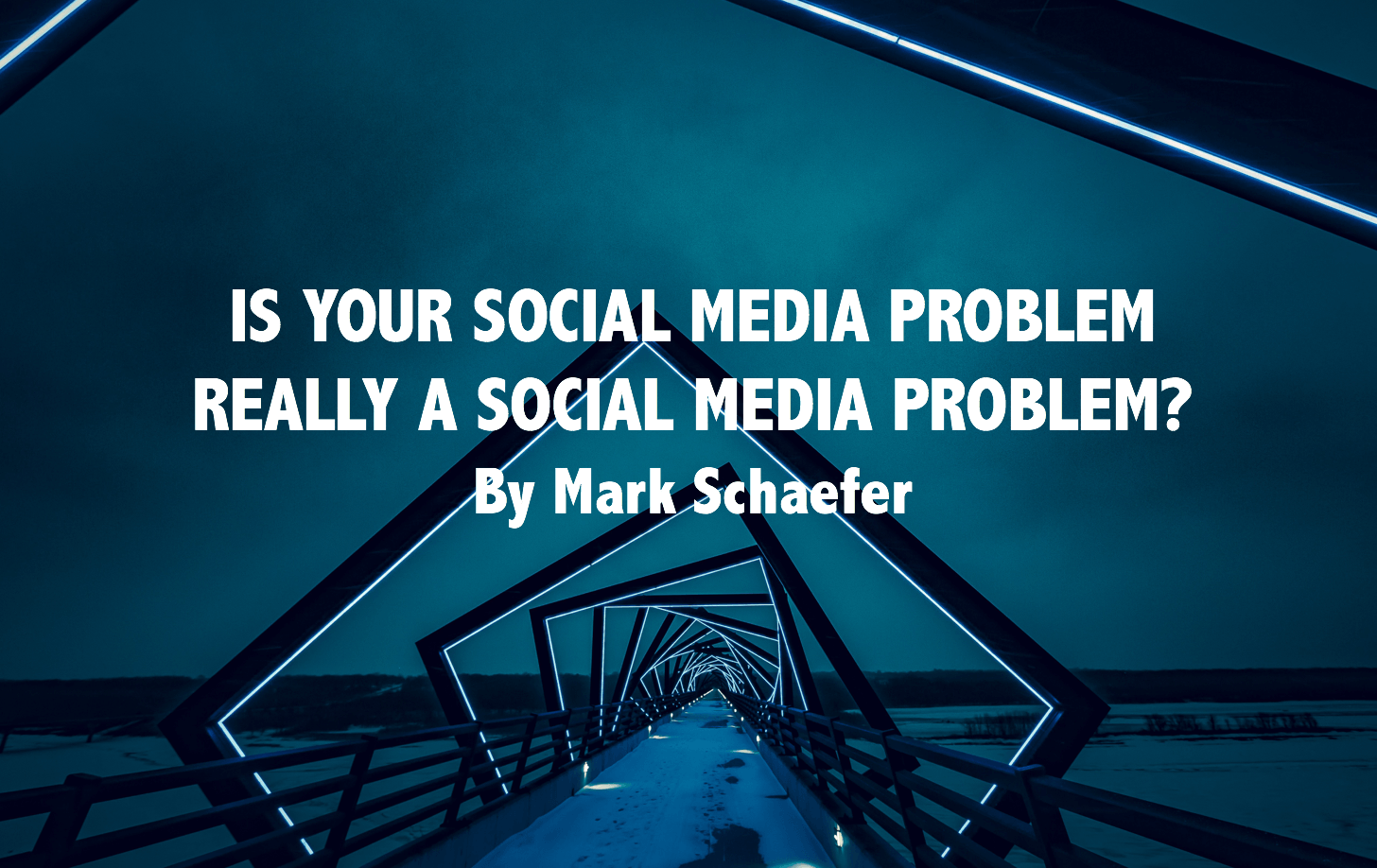
By Mark Schaefer
I love coaching people through their marketing strategy problems. This is where I thrive. In fact, there’s nothing I like better than a good business problem to tackle.
But more often than not, when people think they have a social media marketing problem, it’s not a marketing problem at all. I would say about 90 percent of the time I discover some other underlying issue.
Here are three problems that people may THINK are social media marketing problems … but they’re not.
1) Leadership
Once I start probing for the root causes of a problem, often the issue has nothing to do with the strategy, the budget, or the talent working on the project. It’s a lack of support from management.
Moving traditional marketing to building a social media presence and community takes more than money and people. It takes a new mindset. This is extraordinarily hard to do! Companies are under enormous pressure to increase quarterly profits. There is no guarantee, at least in the short-term, that this will come with social.
The company culture has to adjust to the expectations of this always-on world and that has to come from the top. There is no such thing as a grassroots movement to change a company culture.
Many times when a social media effort stalls, it’s due to a leadership issue, not a strategy issue. Marketing leaders don’t need to tweet and blog, but they need to understand the realities of the digital world and what is, and isn’t possible. They need to know enough to ask the right questions and lead the team.
2) Content Shock
I did some consulting for a company recently that seemed to be doing everything right:
- They were creating excellent content consistently
- They had resources available to promote the content and engage with a community
- The content they were creating was well-aligned with both their goals and their customer needs.
Yet, they were getting no engagement, no traffic, no results. What was going on here?
The simple answer in this case is “Content Shock.”
Content Shock is a term I coined in 2014 which has sort of been adopted by the industry as a way to describe what happens when a market niche has been flooded with quality content. If you’re the business that caused the flood of content, you’re in good shape. But if you’re late to the game, it may be almost impossible to compete without enormous effort and cost.
That was the case with my client. They ignored the fact that their market segment was over-saturated with competitor content and more “me-too” content was only adding to the noise. Going head-to-head probably isn’t a great option. This company needs to find a new way to maneuver by looking at different platforms, content types, or audiences to pursue.
3) Unrealistic goals
If you’re going into a social media marketing effort with aim at an immediate increase in sales, you’re setting yourself up for failure.
In a previous post on social media measurement, I outlined the reasons why this is the case. Research shows that early on in a social media marketing effort, companies are likely to see an increase in awareness (85 percent) but unlikely to see an increase in direct financial benefits (about 30 percent realize that goal in the first year).
So if your sales team is in charge of the social media campaign, they’re probably going to be disappointed.
Another unrealistic goal is driving huge engagement. I am skeptical of engagement as a metric of true, long-term business value. In fact, you can easily engage yourself into the unemployment line if the engagement isn’t tied directly to some business value.
The lesson here in all three of these examples is that corporate culture plays an incredibly important role in any marketing success. Agree?